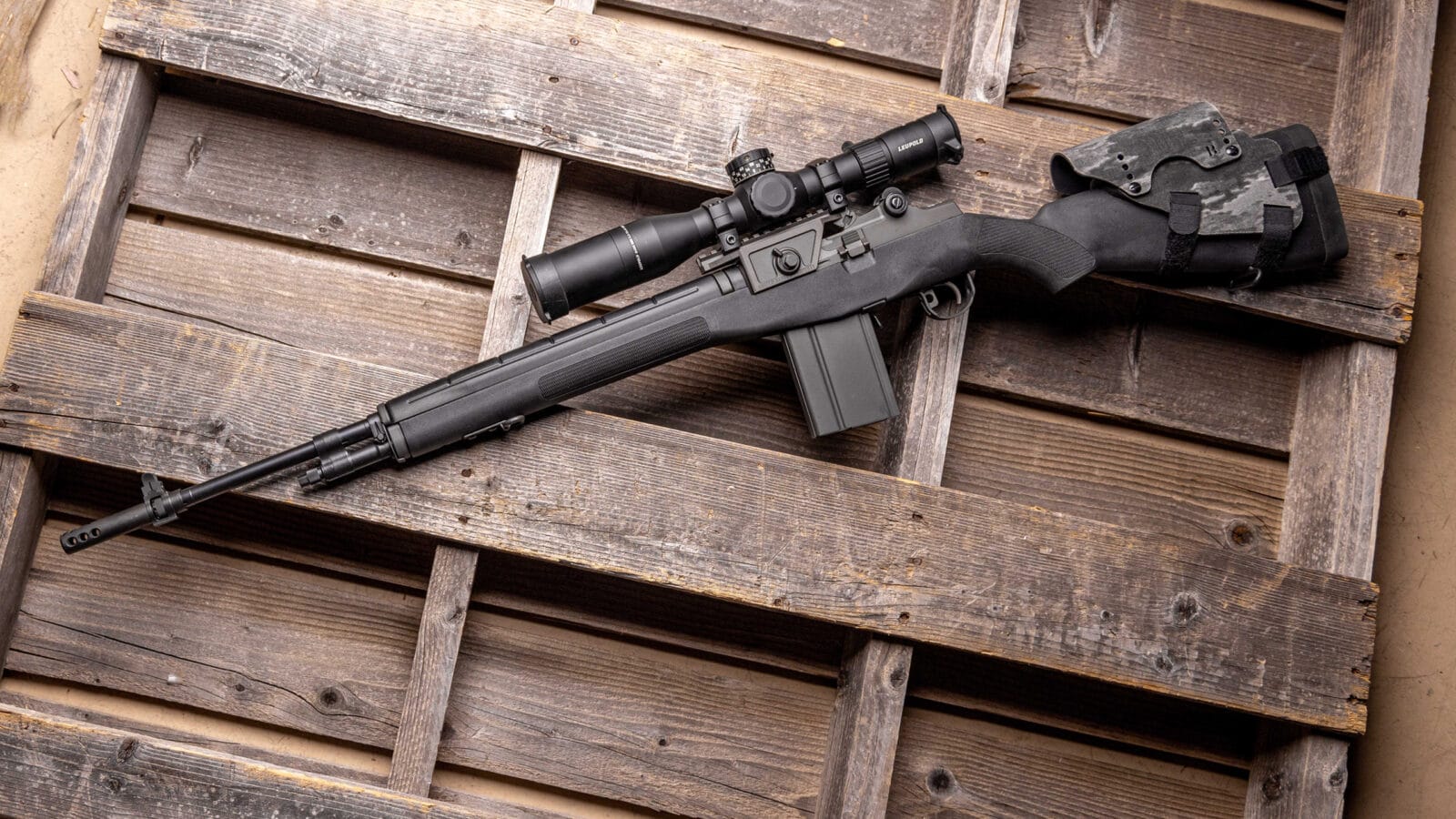Hello all, here is today's article posted on TheArmoryLife.com. It is titled “Bought an M1A, Now What?” and can be found at https://www.thearmorylife.com/bought-an-m1a-now-what/.



as long as loads are anywhere near milspec. Not all hunting type ammo is anywhere near mil-spec based on their pressure curves...
I see no need for an adjustable gas plug...factory self adjusting gas system


The garand is by far less ammo sensitive than an M14.To put a few things in perspective, having owned (still do) and used M1As, and M1 Garands, since the 80's, with some use in competition, I'm not ant-M1A but look at each platforms pluses & minuses.
The use of an adjustable gas plug in either is one of an on-going difference of opinion amongst those with a lot of mileage with both. But, being 90+ yr. old operating systems (The M14 being an M1 variant) folks new to these platform may not know their idiosyncrasies.
As in other threads have said...
"It's all about what you can send down the tube without destroying the delivery system."
"Neither the M1 nor the M14 system will tolerate excessive port pressures without hurting something."
The M14's White Gas System is designed for 12,500 KPSI, CUP. +/- 2KPSI (max 14,500 CUP). The port is about 14-1/8 inches from the bolt face, or about 12.5 inches of bullet travel down-bore. The port pressures for the Garand on the high end of the envelope are about the same.
That being said, also..."the M-14 White expansion and cutoff system is far superior to the Original Garand Gas System." And..."The White Expansion and Cutoff system (M14/M1A) is more adaptable to variations in Gas Pressure (Less likely to bend an op rod with higher velocity Loading's) than the Long Stoke Gas Piston system used in the M1 Garand."
In competition, using non-mil-spec ammo, the "Army MTU did several things to lower port pressures on the M14s. (1) They cut slits with wafer discs in Dremel tools length ways down the large diameter of the piston. (2) They are drilled extremely small holes in the end of the gas plug."
There are second-hand reports of receivers cracking from bolt impact, but these also at least hint or openly admit hot-rodding the loads with heavier bullets. ...from those who shot hundreds and even thousands of 190-grain bullets at 2400 or so FPS from the M14-type that you can get excessive wear and battering on the rear of the op rod and the bolt impact area in the receiver. Excessive port pressure loads move attempted extraction too early in the firing cycle, resulting in rim lift and occasional failures to extract (the empty gets withdrawn and then put back in the chamber). The bolt almost always got far back enough to cock the hammer.
All this being said, if one chooses not to watch out what one feeds either the M1A or M1 Garand, problems can occur. A reasonable option for both platforms is an adjustable gas plug that once adjusted to whatever non-spec ammo you want to use, will still function fine with the ammo that either were designed to run.
So, with those new to the platform look for ammo that states it's made as mil-spec for either platform.
The bottom line is it's your responsibility to get the right ammo for either rifle, and if you don't blame SA if something goes south since we all take risks every day.
My .02
Bonus - Some History

BTW - I may have one of my standard's rebuilt into a SEI Crazy Horse' M21A5 DMR, as per this TAL review.
Different cartridge's too.The garand is by far less ammo sensitive than an M14.
Amen. Semper fi Leatherneck.M-14 in boot camp
The "danger" may be in the rod scratching up the muzzle. You can buy a cheap plastic guide that helps center the rod during bore strokes...I bought several at one time, but the guides tend not to wear out. Excessive wear on the rifling at the muzzle has very bad effects on accuracy. It also helps to pull the brushes and patches only 1 direction, from the chamber to the muzzle. Never push a brush back down the barrel. If you do, the rod will flex under pressure and scratch its way toward the chamber...not good either. I will admit to using brass segmented (I know, blasphemy) cleaning rods primarily, but I only pull brushes from chamber-to-muzzle with a guide. I actually also put a small patch over the end of the rod when pushing toward chamber, then thread on a brush, pull out, repeat. Not perfect, but good enuf for me.anyone have issues with using the steel cleaning rods? they are all I have ever used, but I am only 76 years old. I see several reviews regarding them as "ruining your rifle barrel". since the rod is attached to a brush, or cleaning patch I don't understand how it might "ruin" my barrel. Have not ruined a barrel yet.
agree with everything you said, I still use my rods sometimes, but lately I'm more than likely to use a bore snake as it seems to work so much better. Put some cleaner on the snake before/after the brush section and clean with that. run a cleaning patch a few times and its goodThe "danger" may be in the rod scratching up the muzzle. You can buy a cheap plastic guide that helps center the rod during bore strokes...I bought several at one time, but the guides tend not to wear out. Excessive wear on the rifling at the muzzle has very bad effects on accuracy. It also helps to pull the brushes and patches only 1 direction, from the chamber to the muzzle. Never push a brush back down the barrel. If you do, the rod will flex under pressure and scratch its way toward the chamber...not good either. I will admit to using brass segmented (I know, blasphemy) cleaning rods primarily, but I only pull brushes from chamber-to-muzzle with a guide. I actually also put a small patch over the end of the rod when pushing toward chamber, then thread on a brush, pull out, repeat. Not perfect, but good enuf for me.
My only steel rods are pistol rods...and they're probably aluminum now that I think about it?
One more here. At TBS in Quantico, then at Pendleton. A week before my port call order went thru a quickie “You are going to the Nam” course and was introduced to the M-16. Really preferred the M-14! Went to Nam 4/69. Semper Fi, do or die!Amen. Semper fi Leatherneck.
